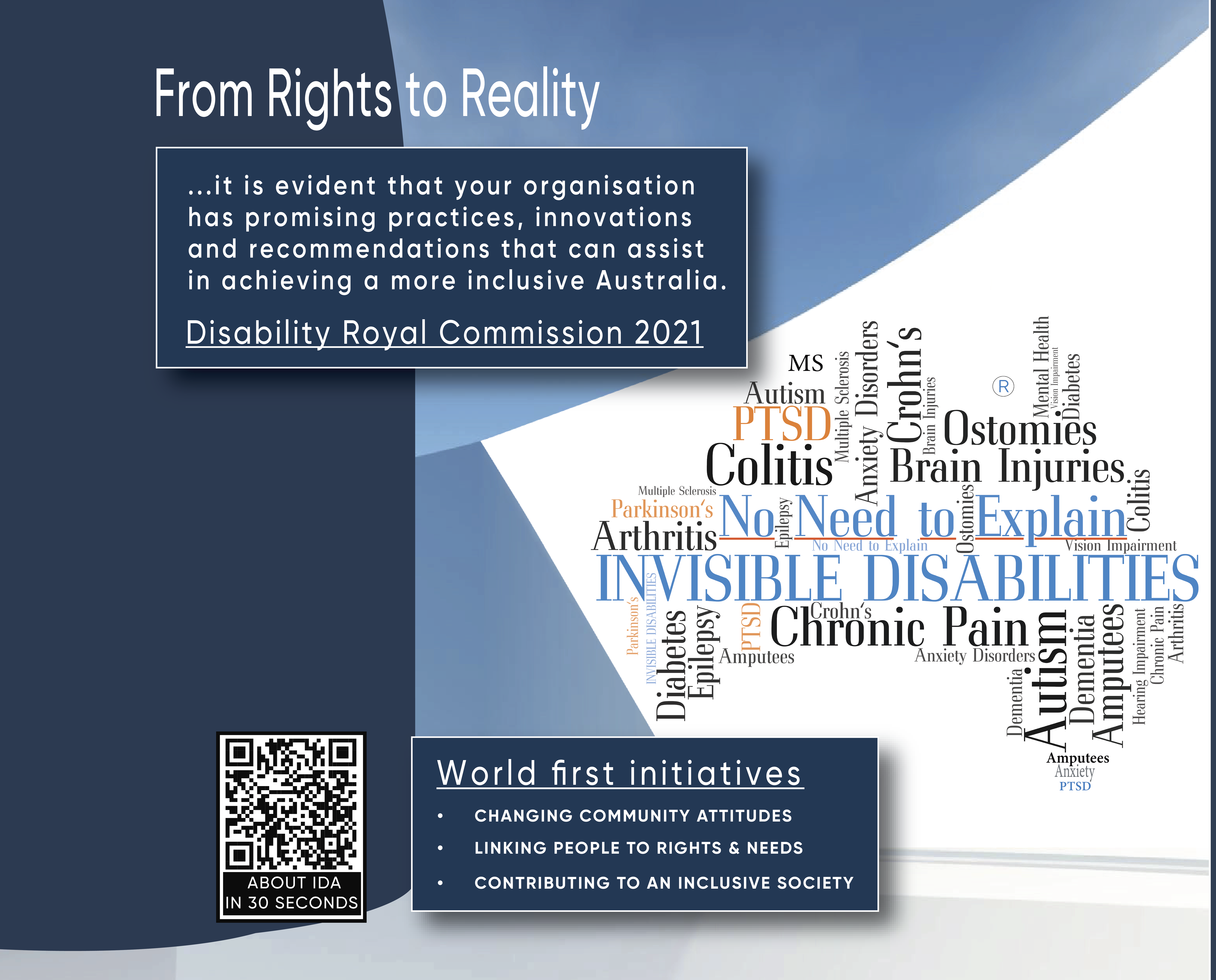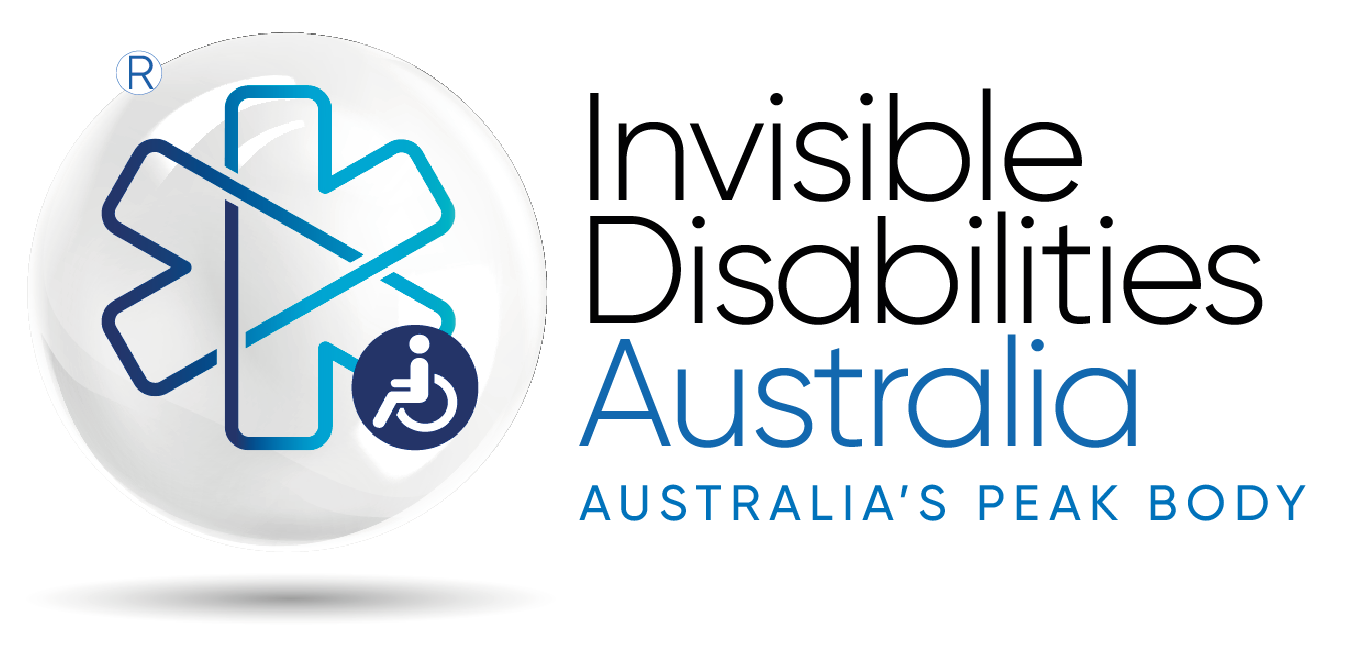Government
Our Lobby
The Disability Royal Commission thanked IDA for advocating for the rights of people with disabilities and impairments and recommended that some of our inititives should be regarded as a matter of national priority.
We work in a bipartisan way with all parties to ensure agreement on issues important to our Invisible Disabilities community.
Your team at Invisible Disabilities have decades of experience lobbying state and federal government on human rights issues. We have successfully worked with Federal Government in bringing about major bi-partisan human rights initiatives including; unanimous resolutions passed through both houses of federal parliament, parliamentary conferences on major issues, instigating senate committee hearings, organising intercountry parliamentary fact-finding human rights delegations and working at the UNITED NATIONS in Geneva, New York & Vienna organising high-level meetings at ministerial and secretariat level.
Our team has extensive background and concern about human rights issues impacting on older Australians, people with disabilities and long term chronic health conditions and impairments.

Over the last 50 years while the definition of disabilities has changed, community understanding, facilities, facility signage and access has stayed the same. This often leads to abuse of people using facilities who have disabilities that are not immediately obvious. This can lead to anxiety, isolation and secondary illnesses our aim is to bring about change working with different industry bodies, the community and government.
As part of our No Need To Explain campaign, Invisible Disabilities Australia is actively lobbying Federal and State Governments to recognise the needs of the millions of people in Australia with invisible disabilities by supporting;
- changes to the Building Code of Australia to include the needs of a broad range of invisible disabilities. Including, but not limited to – design standards that cater to people who have an ostomy (current toilet design does not incorporate the needs of over 50,000 ostomy appliance wearers leading to social isolation, anxiety and worse)
- changing disability signage to incorporate the Invisible Disabilities Australia’s logo, in addition to the current wheelchair logo, where toilet design meets a minimum standard for ostomy wearers and others
- recognition of the Invisible Disabilities Australia – National Card & Lanyard to ensure quick recognition by security staff at venues and airports, tourist facilities, medical staff, schools, post offices, hospitals, police and the public in general
- improved access to facilities and services related to the medical and social needs of our Invisible Disabilities community
- our No Need to Explain campaign is about the need people have and not what their disability is, so no one should have to explain what their invisible disabilities are to get assistance or to use a disabled facility. Our access card does the explaining for them!
- changes to the Civil Aviation and Safety Authority (CASA) airport industry guidelines to support equal access to air travel for invisible and other disabilities to ensure the journey from check-in to arrival at the final destination is made as comfortable as possible and with an appropriate level of care and recognition.
- the addition of photographs to disability parking permits to evidence the need of the driver or passenger in the car. This will help stop the misperception and abuse of people with invisible disabilities when people mistakenly believe that their disability should be visible, as with wheelchairs. We hope this will also contribute to stopping the misuse of disability parking permits.

